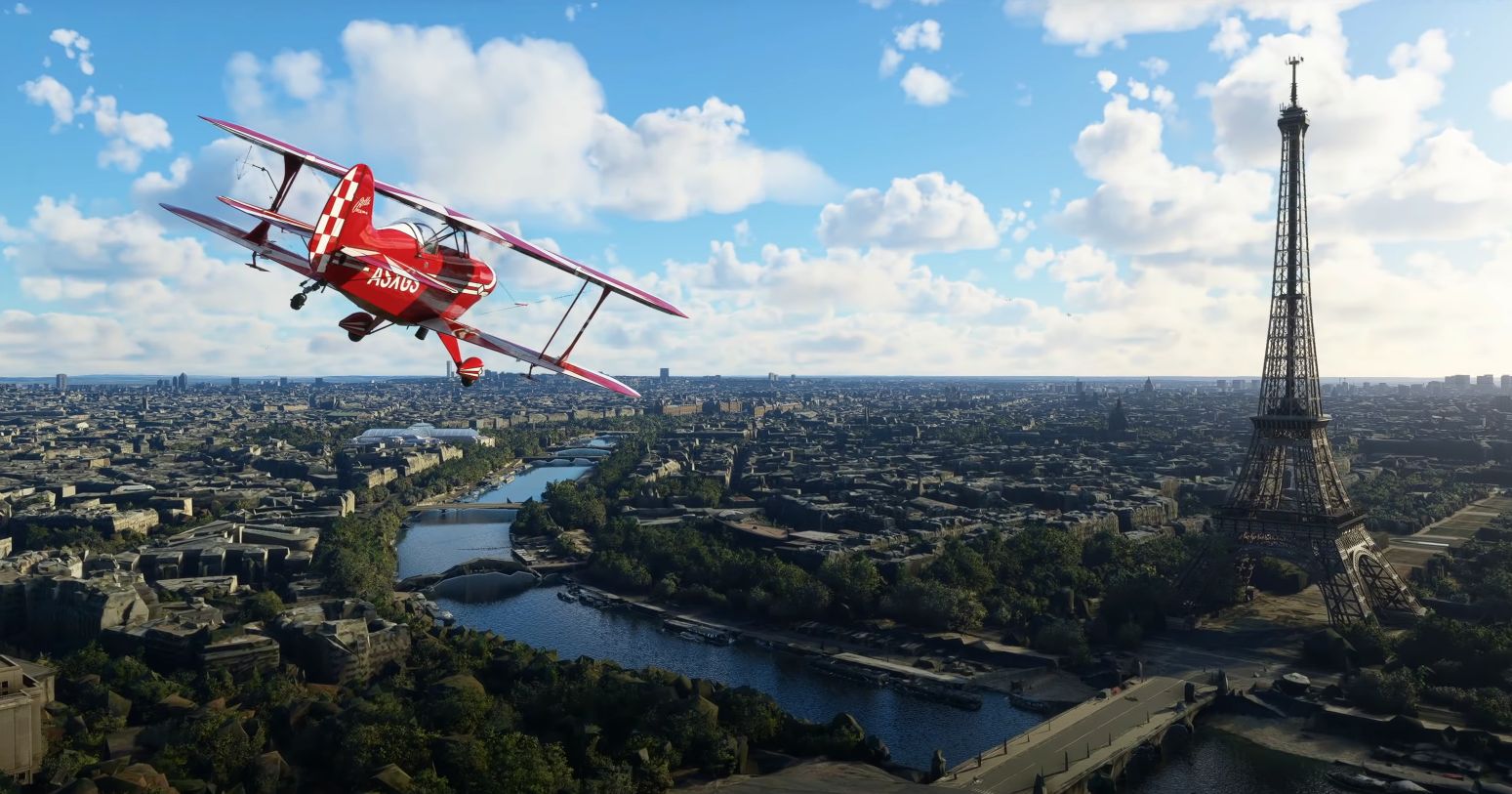Microsoft Flight Simulator is getting FSR support along with DLSS
A welcome development for the beautiful, but very demanding sim.

Microsoft Flight Simulator has a legion of hardcore fans, many of whom build dedicated high-end rigs to enjoy it at its best. And it needs a powerful system. Multiple patches have addressed technical issues that were present at launch, but rendering the real world at high resolution with massive draw distances remains a demanding ask.
Asobo, the developer of Microsoft Flight Simulator, has confirmed it's set to receive AMD FSR 2.0 support. This is in addition to previously announced Nvidia DLSS support. Both upscaling technologies will help to boost performance at higher resolutions.
The developers of Flight Simulator held a Q&A session last week. Asobo Studio's executive producer Martial Bossard stated that DLSS 2.0 and FSR 1.0 support is planned for release as part of Update 10 in July. Work on FSR 2.0 support is underway.
Asobo didn't provide an ETA on FSR 2.0 support, suggesting that a release as part of Update 10 was not likely, but Bossard did say that FSR 2.0 should come 'soon'.

Best CPU for gaming: The top chips from Intel and AMD
Best gaming motherboard: The right boards
Best graphics card: Your perfect pixel-pusher awaits
Best SSD for gaming: Get into the game ahead of the rest
Asobo confirmed that DLSS 2.0 support is due to be included with Update 10. It was revealed that there are still niggles to be worked out with issues around some animated textures and water surfaces, though it's believed these will be sorted out in time to make the planned inclusion in Update 10.
Microsoft Flight Simulator is a notoriously demanding game that can push the limits of current PC hardware, especially when the highest settings are enabled. FSR and DLSS support allows users to run the game on less powerful hardware while giving up little, if anything in the way of image quality.
Not everyone has a high-end GPU to to enjoy Microsoft Flight Simulator with, so the inclusion of upscaling tech will be welcome to users who don't have the latest and greatest hardware. Exploring the world with all of its stunning landmarks is about to get a little easier.
Keep up to date with the most important stories and the best deals, as picked by the PC Gamer team.

Chris' gaming experiences go back to the mid-nineties when he conned his parents into buying an 'educational PC' that was conveniently overpowered to play Doom and Tie Fighter. He developed a love of extreme overclocking that destroyed his savings despite the cheaper hardware on offer via his job at a PC store. To afford more LN2 he began moonlighting as a reviewer for VR-Zone before jumping the fence to work for MSI Australia. Since then, he's gone back to journalism, enthusiastically reviewing the latest and greatest components for PC & Tech Authority, PC Powerplay and currently Australian Personal Computer magazine and PC Gamer. Chris still puts far too many hours into Borderlands 3, always striving to become a more efficient killer.

